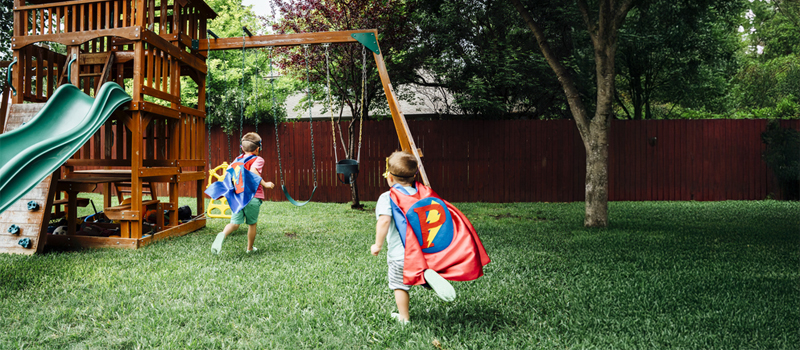At-Home Playground Safety Tips For Parents
At-Home Playground Safety Tips For Parents

At-Home Playground Safety Tips For Parents
As a fundamental childhood activity, play can help your kids develop essential physical, social and behavioral skills. That’s why you might want to install a backyard play space. Unfortunately, more than 200,000 children visit the emergency room annually because of playground-related injuries. To protect your children, consider implementing safety measures in your backyard play area.
Cushion the Area
Energy-absorbent ground cover such as rubber safety mats can provide a cushioned surface that may reduce injuries if your children fall or slip. Other soft options include at least 9 inches of sand, wood chips, mulch, pea gravel, or similar loose-fill material. Whichever option you choose, try to extend the ground cover a minimum of 6 feet in all directions under equipment.
Purchase Safe, Age-Appropriate Equipment
The right playground equipment fits your child’s needs. Ideally, verify that your home playground equipment meets or exceeds ASTM F1148 safety standards. Select equipment that’s the right size, too. For example, check that your child’s head and body can’t slip between guardrails. Additionally, think about choosing soft rather than metal swings and a plastic rather than a wooden slide.
Install Equipment Properly
Where you place the playground can improve safety. Try to set playground equipment at least 6 feet from fences, walls, or other obstacles. Place the equipment on a flat, level surface that is free of stumps, rocks, and stakes. Then, secure each piece to the ground with anchors and cap all screws and bolts.
Teach Safety Measures
Kids may get excited as they play and forget to prioritize safety, so attempt to offer regular reminders. For example, they should slide on their bottoms, maintain a safe distance from moving swings, and tightly grip the seesaw handles. Equally important, consider discussing other playground rules that boost safety, such as taking turns and avoiding roughhousing.
Test the Surfaces
Metal playground equipment can cause contact burns on your children’s hands and legs. And wet equipment may cause slips. Likewise, debris on the ground could lead to injuries. So consider checking all the surfaces before your kids start to play.
Dress Appropriately
For safety, your kids should wear the right gear, like closed-toed shoes. They may also want to avoid wearing scarves, jewelry and drawstrings that could get caught in equipment. Additionally, try to apply a protective broad-spectrum sunscreen with at least 15 SPF every two hours or more frequently if your children are sweating or playing in water. And encourage your kids to dress for the weather conditions, so they remain comfortable as they play.
Supervise Playtime
Whether your kids are climbing, swinging, crawling or sliding, you may want to watch them carefully. This way, you can offer safety prompts and intervene if they attempt unsafe maneuvers.
Avoid Overheating
Your kids could have so much fun playing that they don’t realize they’re getting too hot. So consider encouraging your children to stay hydrated. Give thought to having them play outside in the early morning or late afternoon instead of during the hottest hours of the day, too.
Inspect the Playground Often
At regular intervals, examine your backyard playground equipment. You could remove tripping hazards around the play space and inspect the equipment for sharp edges and broken, cracked, rotten, loose, rusty or missing pieces. And confirm the ground cover remains intact.
Gain Peace of Mind
Your backyard play area can provide hours of fun and skill-building for your children. After adopting helpful safety tips, you may wish to learn first aid and consult with an insurance agent to further protect your kids while they play.
